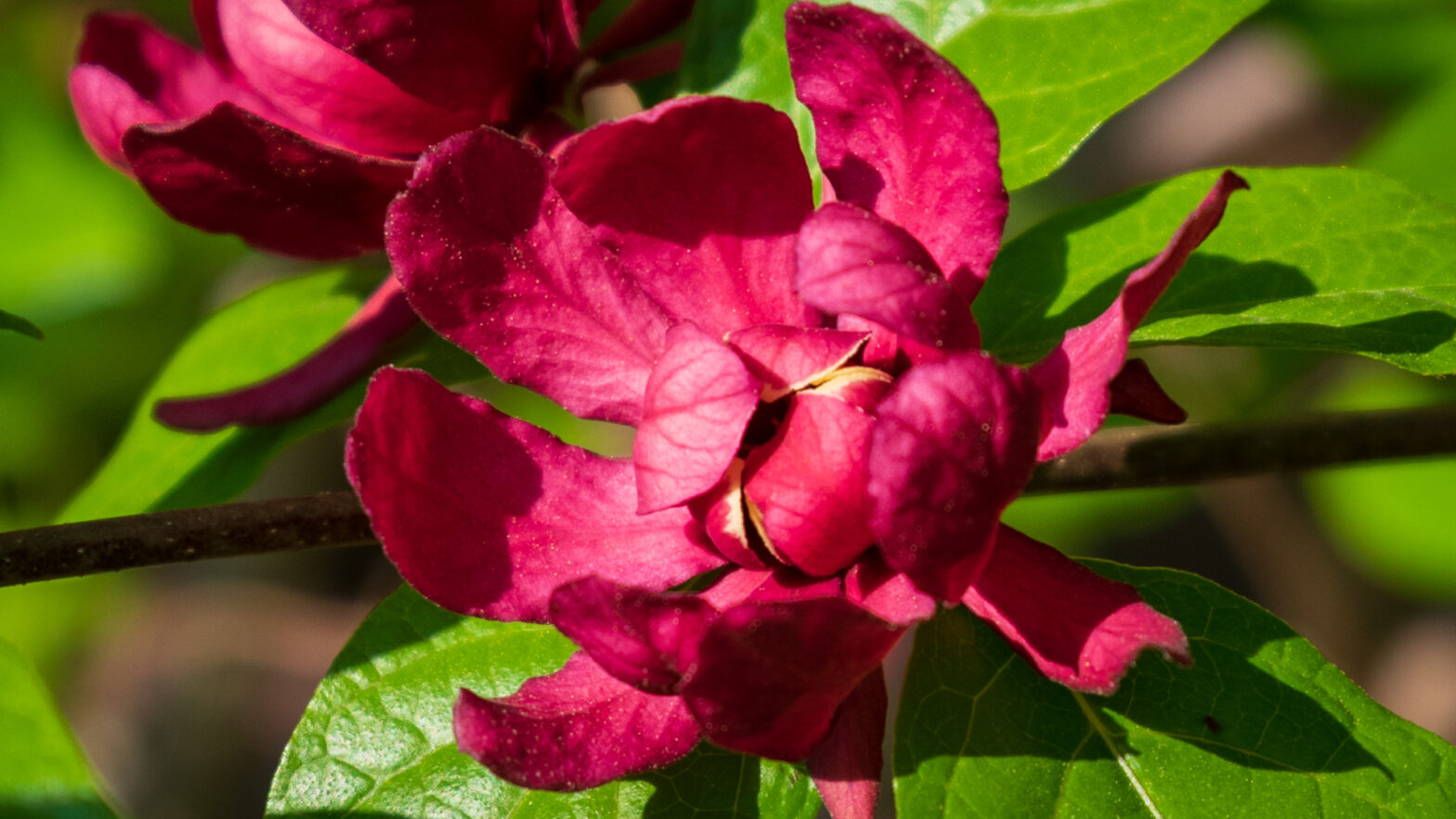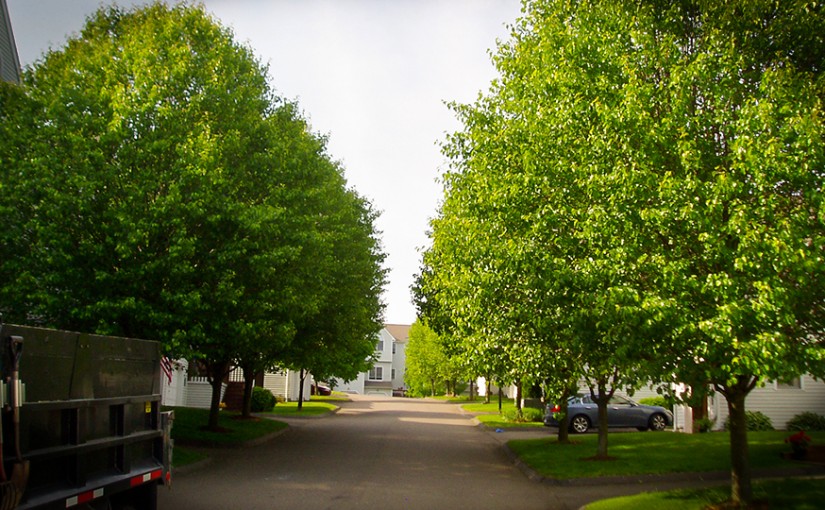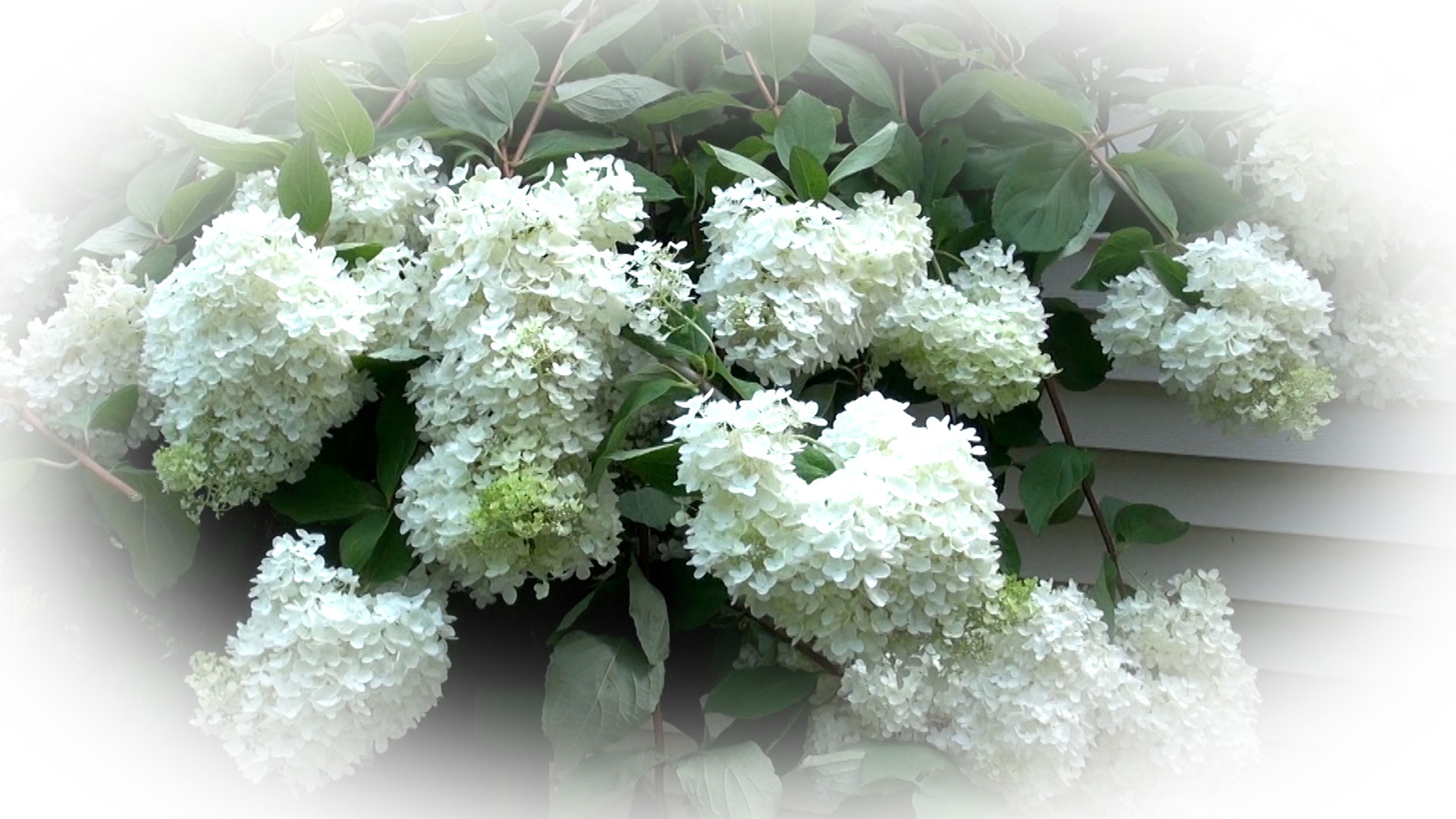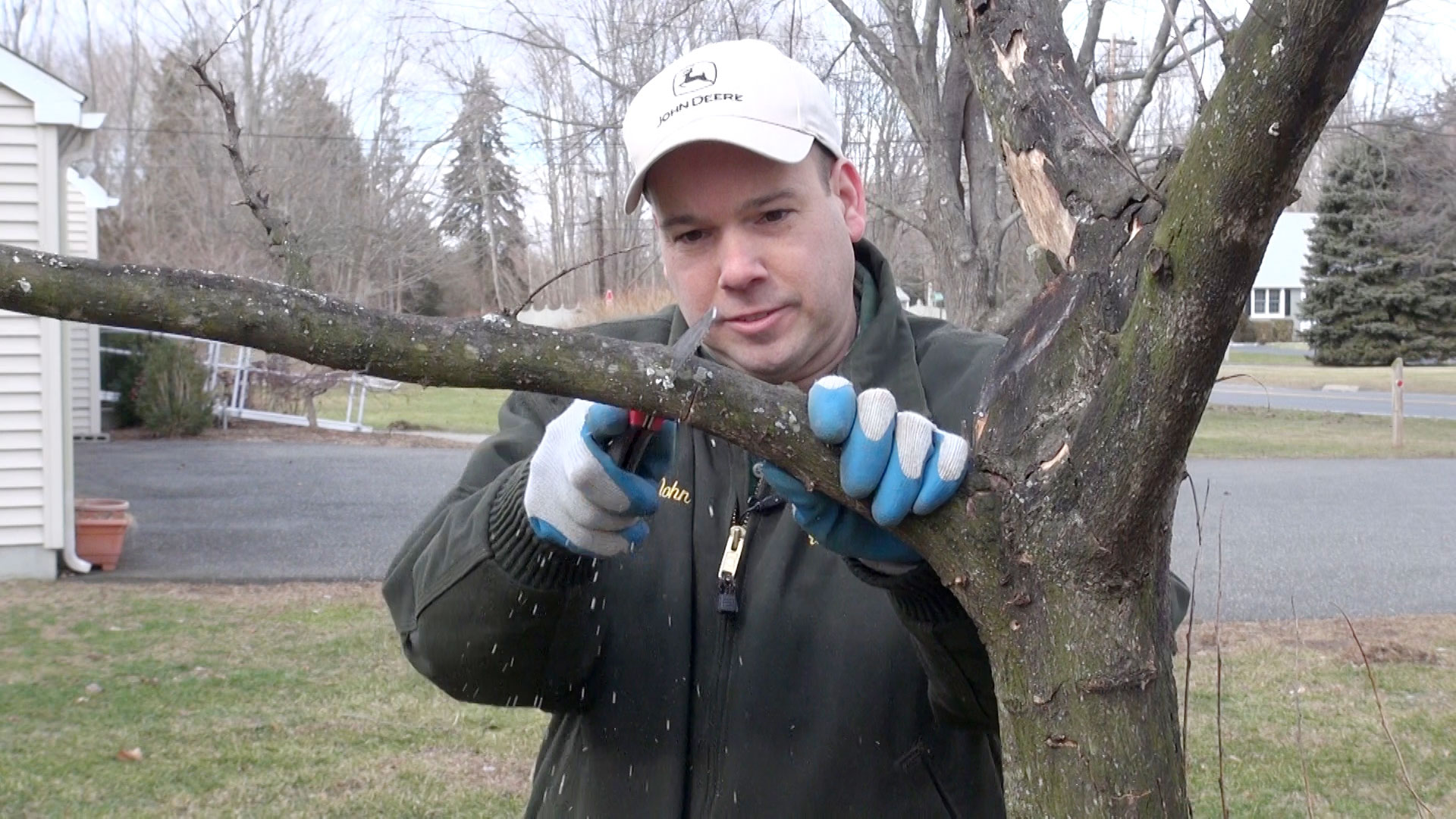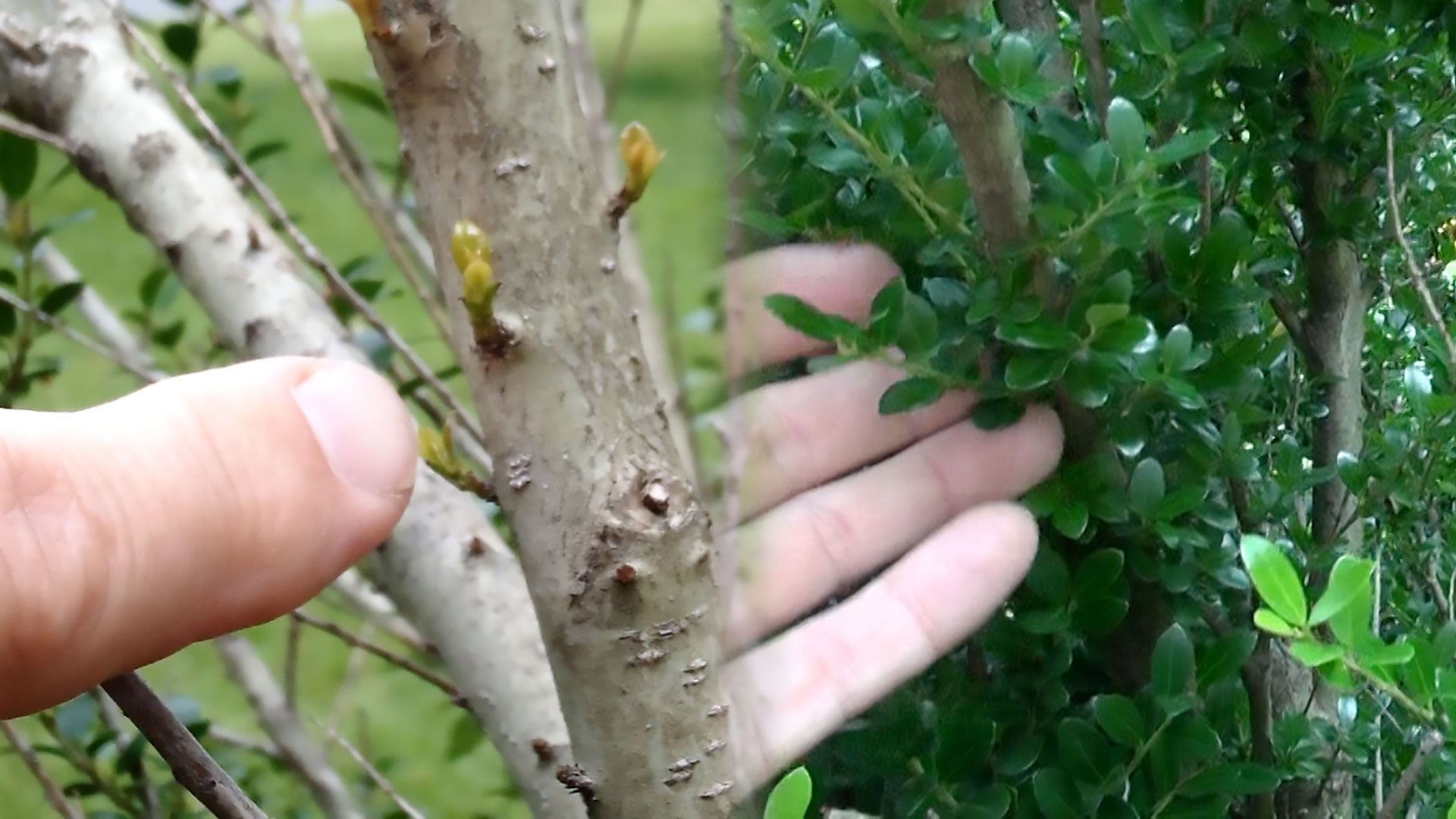Hartlage Wine Calycanthus, Calycanthus raulstonii ‘Hartlage Wine,’ is an underused large shrub that ticks all the boxes: gorgeous blooms, long season of bloom and easy to care for.
Where does Hartlage Wine Sweetshrub Grow?
Hartlage Wine Calycanthus will grow in full sun or shade. However, you’ll get more and larger flowers in full sun.
Calycanthus likes average to slightly moist soil.
How large does Hartlage Wine Calycanthus Grow?
Hartlage Wine Calyucanthus grows 12 feet tall, with new growth extending 3 to 4 feet from the previous year.
Hartlage Wine Sweetshrub is a fast grower; the more sun, the quicker it fills in.

When does Hartlage Wine Sweetshrub Bloom?
Hartlage Wine Calycanthus blooms four to six weeks, beginning early May in USDA Hardiness Zone 6.
The flowers are three to four inches in diameter and have a crimson-purple color that is gorgeous.

The more sun Hartlage Wine Calycanthus receives, the more it blooms. In deep shade, there are still flowers.

Hartlage Wine Sweetshrub foliage fills in through the season. By October, the leaves fill in dramatically.

The leaves are glossy and grow quite large.

How Do You Prune Hartlage Wine Calycanthus?
Perform heavy pruning immediately after bloom for the best display next year. Hartlage Wine Calycanthus easily recovers from heavy pruning.
Crossing branches and branches that grow away from the shrub should be removed. Then, reduce the overall height of the shrub by one to three feet.
I’ve never had a bad year of bloom, except for reduced bloom and more petite flowers on plants in deep shade.
If you’re planting Hartlage Wine Calycanthus as a naturalizing shrub, pruning isn’t necessary. After 4 to 5 years, the shrub will develop into a thicket 10 to 12 feet tall.
Does Hartlage Wine Sweetshrub have a Fall Color?
Hartlage Wine Calycanthus has a yellow fall color.

My love for Hartlage Wine Calycanthus has only increased since making this video.
Hartlage Wine Calycanthus is a must-have for the gardening enthusiast in USDA Hardiness Zone 6, along with Dwarf Fothergilla and PeeGee Hydrangea.
